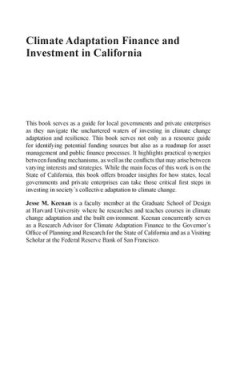Filter by

Hanging Out, Messing Around, and Geeking Out: Kids Living and Learning with N…
An examination of young people's everyday new media practices—including video-game playing, text-messaging, digital media production, and social media use. Conventional wisdom about young people's use of digital technology often equates generational identity with technology identity: today's teens seem constantly plugged in to video games, social networking sites, and text messaging. Yet ther…
- Edition
- -
- ISBN/ISSN
- 9780262013369
- Collation
- -
- Series Title
- -
- Call Number
- -

Halal Development: Trends, Opportunities and Challenges: Proceedings of the 1…
The increasing demand for halal products, including goods and services, every year, especially for food and beverages, has resulted in a growing need for products with halal guarantees. Along with the increasing trend of the global demand, it has resulted in an increase in producers of halal food and beverages in both Muslim and non-Muslim countries. In addition the demand for halal tourism is …
- Edition
- -
- ISBN/ISSN
- 9781000416008
- Collation
- -
- Series Title
- -
- Call Number
- -

Gute Technik für ein gutes Leben im Alter? Akzeptanz, Chancen und Herausford…
Längst gibt es altersgerechte digitale Assistenzsysteme. Doch sind Umfang und Geschwindigkeit ihrer Verbreitung sowohl in Pflegeeinrichtungen als auch in privaten Haushalten weitgehend unbekannt. Informationen zu tatsächlich eingesetzten Systemen, realisierten Umsätzen und Marktvolumen sind kaum zu finden. Obwohl es viele Vermutungen hinsichtlich der Hindernisse bei der Einführung altersger…
- Edition
- -
- ISBN/ISSN
- 9783839454695
- Collation
- -
- Series Title
- -
- Call Number
- -

Public Participation, Science and Society Tools for Dynamic and Responsible …
The field of public participation is developing fast, with phenomena such as citizen science and crowdsourcing extending the resource base of research, stimulating innovation and making science more accessible to the general population.Promoting public participation means giving more weight to citizens and civil society actors in the definition of research needs and in the implementation of res…
- Edition
- -
- ISBN/ISSN
- 9781351272957, 1351272950
- Collation
- -
- Series Title
- -
- Call Number
- -

The Politics of Uncertainty Challenges of Transformation
Why is uncertainty so important to politics today? To explore the underlying reasons, issues and challenges, this book’s chapters address finance and banking, insurance, technology regulation and critical infrastructures, as well as climate change, infectious disease responses, natural disasters, migration, crime and security and spirituality and religion.The book argues that uncertainties mu…
- Edition
- -
- ISBN/ISSN
- 9781000163445, 100016344X
- Collation
- -
- Series Title
- -
- Call Number
- -

Climate Adaptation Finance and Investment in California
This book serves as a guide for local governments and private enterprises as they navigate the unchartered waters of investing in climate change adaptation and resilience. This book serves not only as a resource guide for identifying potential funding sources but also as a roadmap for asset management and public fi nance processes. It highlights practical synergies between funding mechanisms, a…
- Edition
- -
- ISBN/ISSN
- 9780367026073
- Collation
- -
- Series Title
- -
- Call Number
- -

Chapter 8 The Status and Role of the alpine Cryosphere in Central Asia
The alpine cryosphere including snow, glaciers and permafrost are critical to water management in the Aral Sea Basin (ASB) and larger Central Asia (CA) under changing climate: as they store large amounts of water in its solid forms. Most cryospheric components in the Aral Sea Basin are close to melting point, and hence very vulnerable to a slight increase in air temperature with significant con…
- Edition
- -
- ISBN/ISSN
- 9781138348882
- Collation
- -
- Series Title
- -
- Call Number
- -

Understanding Drugs Markets: An Analysis of Medicines, Regulations and Pharma…
Drawing on anthropology, historical sociology and social-epidemiology, this multidisciplinary book investigates how pharmaceuticals are produced, distributed, prescribed, (and) consumed, and regulated in order to construct a comprehensive understanding of the issues that drive (medicine) pharmaceutical markets in the Global South today. Based on primary research conducted in Benin and Ghana,…
- Edition
- -
- ISBN/ISSN
- -
- Collation
- -
- Series Title
- -
- Call Number
- -

Organising care around patients : Stories from the frontline of the NHS
Healthcare aims to be patient-centred but a large gap remains between the fine words and the reality. Care often feels designed for the convenience of the organisations that deliver it, and not enough around patients and their families, or even around the frontline staff who provide it. Why does this happen? What does it feel like? What can be done about it? This book stimulates reflection on t…
- Edition
- -
- ISBN/ISSN
- 9781526147448
- Collation
- -
- Series Title
- -
- Call Number
- -

Facets of Facebook: Use and Users
The debate on Facebook raises questions about the use and users of this information service. This collected volume gathers a broad spectrum of social science and information science articles about Facebook. Facebook has many facets, and we just look forward above all to the use and users. The facet of users has sub-facets, such as different age, sex, and culture. The facet of use consists of…
- Edition
- -
- ISBN/ISSN
- 9783110419351
- Collation
- -
- Series Title
- -
- Call Number
- -
 Computer Science, Information & General Works
Computer Science, Information & General Works  Philosophy & Psychology
Philosophy & Psychology  Religion
Religion  Social Sciences
Social Sciences  Language
Language  Pure Science
Pure Science  Applied Sciences
Applied Sciences  Art & Recreation
Art & Recreation  Literature
Literature  History & Geography
History & Geography